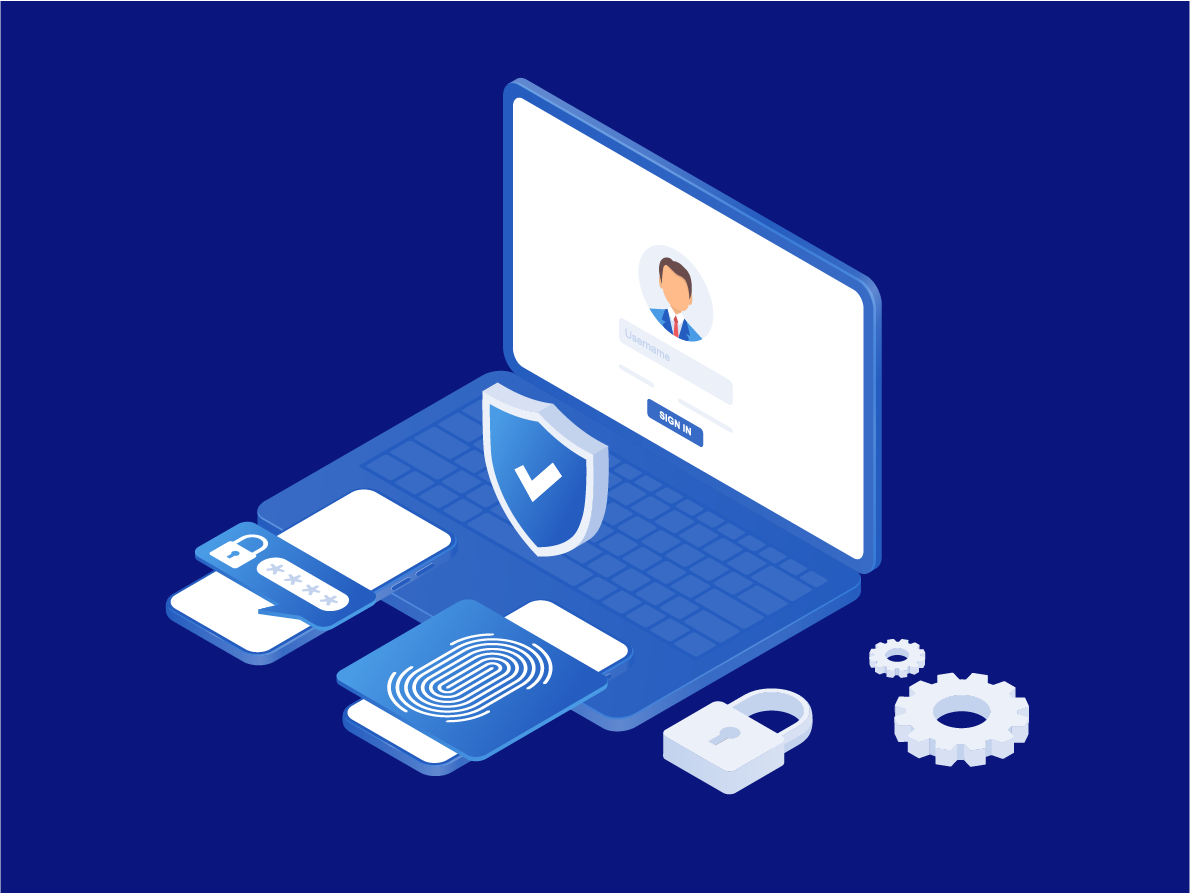
For decades, many industries have relied on knowledge-based credentials to protect their clients' digital accounts. Passwords and PINs became the primary form of protection against bad actors and are still widely used by countless businesses today.
But over-reliance on passwords poses risks to online security. Many if not most people easily forget text-based login credentials, resulting in them being locked out of their accounts. In addition, fraudsters are already integrating tech-savvy and modern strategies with traditional techniques to make their attacks harder to predict. This gives them more potential to exploit enterprises’ digital security and access data without authorization. Research from Avast showed that more than 90% of online users are concerned that their passwords and other personal information will get compromised.
This led to industry leaders pushing for the adoption of passwordless verification solutions for real-time fraud prevention. Several sophisticated identity proofing methods, such as FIDO2 biometric authentication, have recently gained traction. This approach provides a reliable solution to the growing threats to passwords since biometric data is unique to each person and hard to replicate.
The Need for Passwordless Identity Authentication
Digital transformation accelerated due to the COVID-19 pandemic, and it is projected that the digital sphere will be a more vital part of countless industries moving forward. This will lead to more consumers creating online accounts and institutions storing more personal information on their servers. It also increases the risks of bad actors becoming more determined to expand their ways of infiltrating online security measures.
Passwords have been around for decades, and cyber criminals already have multiple strategies to capture text-based credentials quickly. Identity theft cases are constantly increasing over the years, as reflected in the FBI's IC3 report, where they received over 51,000 reports in 2021.
The increasing vulnerability of passwords led to more than half of consumers and IT specialists wanting an alternative identity proofing measure that would not rely on knowledge-based credentials. Shifting to biometric digital signatures for authentication equips companies with a more robust tool against potential attacks. Furthermore, employing passwordless authentication allows customers to sign into their accounts seamlessly.
FIDO2 and PSD2
The growing demand for developments in the cybersecurity market has led to the promulgation of guidelines that aim to help businesses improve their security systems. One of the popular and most secure standards adopted in many industries is FIDO2. Introduced by the Fast Identity Online (FIDO) Alliance in 2018, FIDO2 passwordless authentication requirements promote license-free standards for a secure authentication solution.
FIDO WebAuthn, one of the core components of FIDO2, allows websites to integrate FIDO-based authentication directly on their login pages. This will enable consumers to use the biometrics native to their mobile phone or computer, to seamlessly log in and use online services with their fingerprint or a face scan.
A well-known regulation for identity authentication is the revised Payment Service Directive (PSD2) by the European Union (EU). A leading requirement in PSD2 is the Strong Customer Authentication (SCA), which requires multi-factor authentication (MFA) for complex services like digital payments. Investing in strong customer authentication solutions will allow enterprises to use a mix of knowledge-based credentials, biometrics, and physical devices to ensure a high level of identity authentication.
Common Challenges in Passwordless Authentication Deployment
Even though passwordless authentication using a digital signature API is considered a robust verification system, it is still in its early years. Close to 50% of companies are yet to go passwordless and still stick to traditional authentication solutions. And one of the leading factors that block the broad adoption of the passwordless system is its deployment cost and effort.
The difficulties and expenses of making an IT infrastructure capable of passwordless user verification make companies shy away from deploying them. It requires in-depth planning to implement new software, making it tedious for small and medium businesses (SMBs). It also means training a dedicated team to manage the system, which most firms cannot do, especially those with a limited budget.
Security limitations of using non-FIDO-based digital signature authentication also play a role in the hesitation to adopt passwordless user verification. Other rampant forms of cyberattacks, such as malware and man-in-the-middle, still enable bad actors to intercept one-time passwords (OTPs) when a customer signs in.
Numerous users are skeptical about the efficiency of passwordless authentication for cybersecurity. Most consumers want to stay with traditional signing methods as it has already become a routine for them, despite the security risks.
How to Increase the Adoption Rate
Despite the challenges, the adoption of passwordless login will continue as the world progresses into the new, post-pandemic normal. Embracing passwordless user verification will give companies a considerable edge over market competitors. In addition, they will be able to protect both themselves and their clients from sophisticated cyberattacks.
A crucial step in increasing the adoption rate is understanding the customer's needs and behaviors. By learning what devices their clients use and how often they use online platforms, the company can deliver an exceptional passwordless user experience tailored to their patrons' behaviors.
It is also vital for organizations to review their existing authentication system and resources. Learning about customer behaviors will allow institutions to eliminate the use of passwords and promote more secure MFA methods. They can also integrate risk signals that will enable them to extend their MFA procedures.
Another way to increase the adoption rate is to minimize time to value. Firms can explore how to improve the current system and secure user credentials. Businesses can also modify their MFA process to eliminate the need to type weak and easy-to-guess passwords when signing in. Biometrics, for example, can seamlessly verify users using their fingerprints or facial structure.
Companies can initially introduce new passwordless authentication protocols as an alternative to passwords for their existing clients. When an existing client logs in, the company can prompt the user to add a biometric credential to their account for login in the future, thus phasing out passwords from their current user base.
The Passwordless Future
The increasing number of identity theft and account takeovers emphasizes the need for a robust authentication system. Passwords have become unsafe, so it is essential to improve the user verification process to mitigate potential financial and reputational damage in the years to come.
Passwordless authentication can significantly improve digital security and user experience when signing in. However, its implementation is gradual, and institutions that already have it face difficulties in adopting it across their platforms. Partnering with leading authentication providers like LoginID can help brands and their clients reap the benefits of going passwordless.
LoginID's FIDO2 biometric authentication solution is highly secure, simple to integrate, and reduces friction during the onboarding and signing-in processes. It enables financial institutions, banks, and card issuers to offer clients strong authentication and identity verification across desktop and mobile platforms.
To learn how LoginID can equip companies and businesses with the necessary fraud prevention tools, get started by registering for a free account. Alternatively, check out our tutorial or read our documentation and see how easy it is to get add LoginID's FIDO2 biometric authentication to your website or app.
Sources:
- https://www.forbes.com/sites/forbestechcouncil/2021/11/23/whats-blocking-the-adoption-of-passwordless-authentication/?sh=4a27bdb77f1e
- https://www.futurae.com/blog/passwordless-authentication-solutions-mfa/
- https://www.securitymagazine.com/articles/94473-adoption-of-passwordless-security-takes-off-amid-covid-19
- https://www.biometricupdate.com/202110/passwordless-authentication-trending-up-as-strong-roi-case-unveiled
- https://www.helpnetsecurity.com/2021/11/04/workforce-passwordless-authentication/
- https://fidoalliance.org/fido2-2/fido2-web-authentication-webauthn/
- https://jumpcloud.com/blog/benefits-challenges-passwordless-authentication


